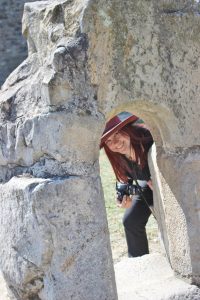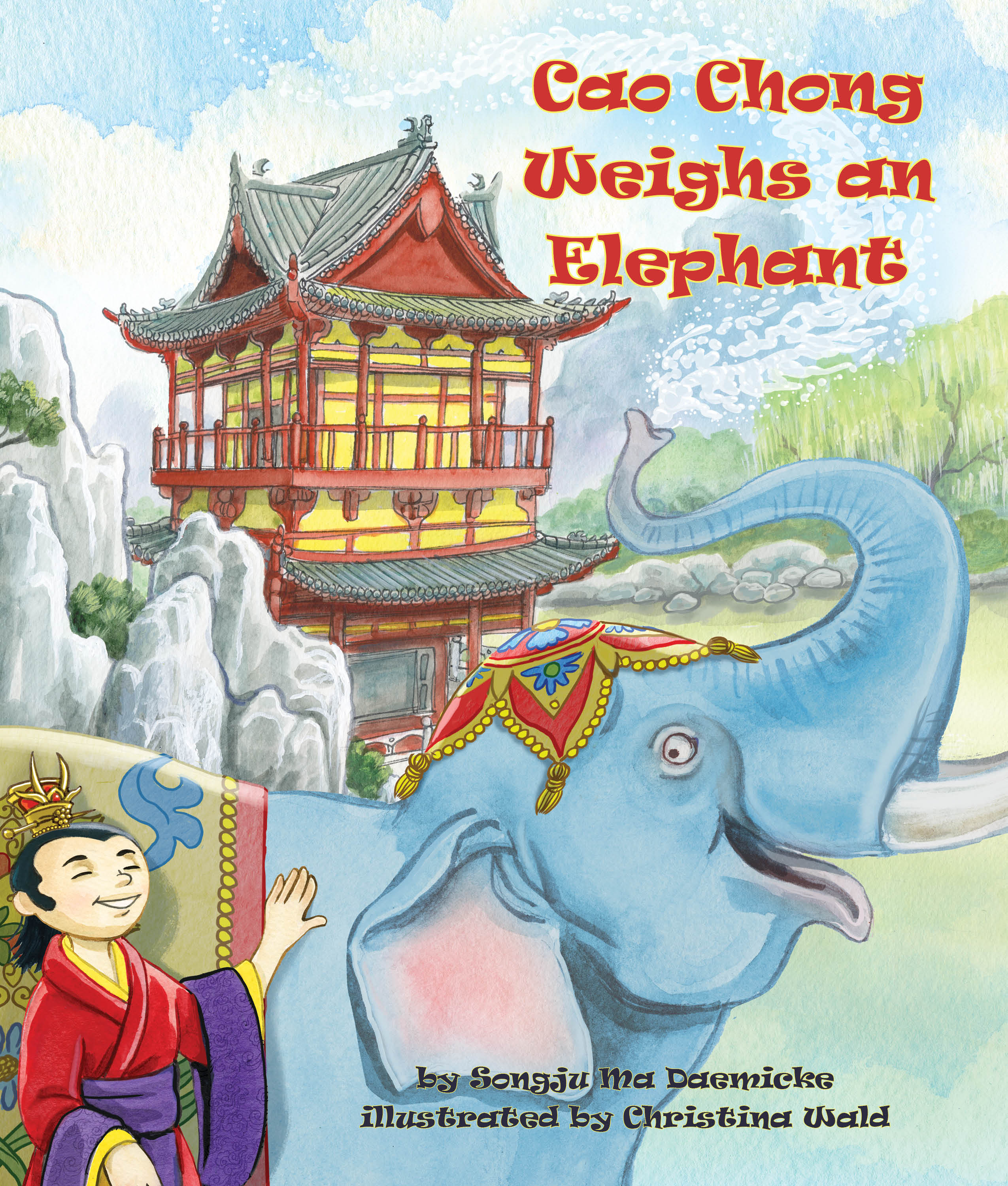3 Questions with Christina Wald

What does an illustrator add to the story?
The illustrator is selected by the publisher to bring their artistic vision to a manuscript. The manuscript is like a movie and the artist is the director, and researcher, and set, costume, and character designer.
If it is a story book or comic, I start with thumbnails and character sketches to get the feel of the story and determine camera angle, scale, costume and set. I research furniture, clothes, time periods and whatever else is required for the story. Then, I sketch each spread. Sometimes I am creating a fantastical new world, or I am creating a real world for the characters to exist in. Once the sketches are approved by the team, I do the finished art. Each spread is a balance of color, composition, and communication to keep the reader engaged. I work with a designer, another artist who designs the type and layout.
If it is a science-oriented book, I research the topic thoroughly. Examples: Little Red Bat, I visited a bat rescuer to get up close with the bats and see how they moved. Wild Life of Elk, I went to Montana and Kentucky to photograph elk and see their environment. Paws, Hoofs and Wings Animal Heroes of the San Diego Zoo, I visited the zoo to get a feel of the animals, atmosphere, layout and setting of the zoo. There are so many details to consider: what plants fit in with a particular environment, what time of day, what other animals and insects, what is the soil texture…
 A few years ago, I illustrated the picture book biography Annie Jump Cannon, Astronomer which required contacting the Harvard Library an Oxford University to accurately depict details from eye color to scientific experiments. For Cao Chong Weighs an Elephant, I poured over books on ancient Chinese architecture and costume. I also watched movies about the time period made by Chinese directors like Red Cliff (which I watched over and over).
A few years ago, I illustrated the picture book biography Annie Jump Cannon, Astronomer which required contacting the Harvard Library an Oxford University to accurately depict details from eye color to scientific experiments. For Cao Chong Weighs an Elephant, I poured over books on ancient Chinese architecture and costume. I also watched movies about the time period made by Chinese directors like Red Cliff (which I watched over and over).
Over the years, I have a made lot of scientist friends who I consult, resulting in very interesting discussions. I learn something new with every project!
How much input does an author have on the illustrations of a picture book?
Usually the publisher chooses the illustrator but not always.
The author often gets to give feedback on sketches and final art filtered through the editorial staff. The illustrator gets a lot of leeway to pursue the visual direction as they envision it.
Most of the feedback I receive from my authors is useful and makes the book better. Every book is a collaboration between several artists. We all want it to be a great book!
What advice do you have for illustrators who want to get into illustrating books?
Illustrating a book is a marathon. It takes persistence, dedication and obsession. It is also the best job ever. One day I am painting crocodiles, the next ancient China, and then a cowgirl and her horse or an old folk tale… Each day is always a new adventure. I learn and experience so much with each new book; it is quite wonderful.
It is a given that every aspiring illustrator should draw as much as possible and constantly level up their skill. But also take an interest in learning and perceiving the world around you, develop an ability to design, problem solve, and visually communicate.
No one can make it alone, everyone needs a support system and should be part of a support system. Be a part of your local arts community and the world arts community; talk to other artists, teachers and librarians.
About Christina Wald
Christina is an illustrator, designer and teacher. She teaches illustration at the Art Academy of Cincinnati and Northern Kentucky University. She studied industrial Design at University of Cincinnati and also designs toys. Urban sketching, comics and travel are her obsessions.
She had three new books out in 2017: Denni-Jo and Pinto written by Buck Buchanan, Cao Chong Weighs and Elephant written by Songju Ma Daemke (an NSTA Outstanding Trade Book) and One Day in the Desert by Anna Keener. Learn more here!
Instagram: @cswyelloka

